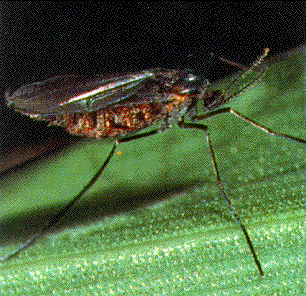Planting
Last updated
February 23, 2014
Planting - Dimensions of planting
planting date
row spacing
plant density
seeding depth
PLANTING DATE


- Needs to be timely
- Seed winter wheat when the danger of APHID and HESSIAN FLY infestation is past
- Don't plant winter wheat too late
- Want the plants to establish at least 3 to 4 good leaves and a good root system
before freeze-up
- Spring wheat planting date - plant early, but don't work the soil when wet
ROW SPACING
- Most grain drills seed in 6" or 7" row widths
- Narrower row widths have been investigated for several small grains
- Grain yields may be increased 5 to 10% when 3" to 4" row widths are used
PLANT DENSITY
Traditionally, seeding rates have been expressed in bu/a, but this is not very precise
because seed #/bu varies considerably according to VARIETY and ENVIRONMENT
Recommendations are now being made on the basis of seed #/sq ft
Most common seeding rates: 25-40 seeds/ft2
Seeding rate is influence by several factors:
- Probability of snow cover: Heavier rates often used on fields that may lack adequate
snow cover
- Winter hardiness of varieties: Winter tender varieties often seeded at higher rates
than winter hardy varieties
- Later planting dates - increase seeding rate
SEEDING DEPTH
- Plant 1 to 1 1/2" if soil moisture is good
- Plant slightly deeper (1 1/2 to 2") if topsoil is dry
- Mesocotyl
Planting equipment
- The best grain drills have double-disc openers and press (firming) wheels.
- These ensure uniform depth and good soil-seed contact, and promote RAPID GERMINATION
and UNIFORM STANDS
Tramlines
Tramlines are unseeded tracks through a field that are used to facilitate spraying
or spreading of CHEMICALS and FERTILIZER without damaging the standing crop
Created by blocking drill openers that correspond to width of the tracks of sprayer
tractor
Advantages of tramlines
- Eliminate wheel damaged plants which are more easily infected by diseases
- Border plants next to the tracks produce more grain and compensate for no plants
in the tracks
- Tracks may be more compacted and dry faster than the remainder of the field, permitting
timely application of chemicals and fertilizer